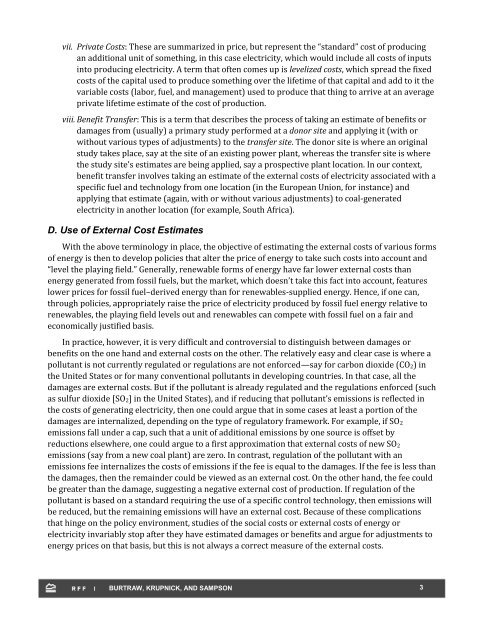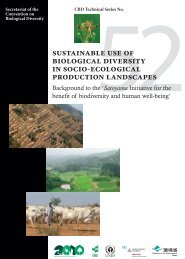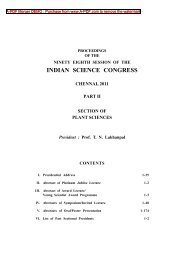The True Cost of Electric Power - India Environment Portal
The True Cost of Electric Power - India Environment Portal
The True Cost of Electric Power - India Environment Portal
Create successful ePaper yourself
Turn your PDF publications into a flip-book with our unique Google optimized e-Paper software.
vii. Private <strong>Cost</strong>s<br />
an additional unit <strong>of</strong> something, in this case electricity, which would include all costs <strong>of</strong> inputs<br />
into producing electricity. A term that <strong>of</strong>ten comes up is levelized costs, which spread the fixed<br />
costs <strong>of</strong> the capital used to produce something over the lifetime <strong>of</strong> that capital and add to it the<br />
variable costs (labor, fuel, and management) used to produce that thing to arrive at an average<br />
private lifetime estimate <strong>of</strong> the cost <strong>of</strong> production.<br />
viii. Benefit Transfer: This is a term that describes the process <strong>of</strong> taking an estimate <strong>of</strong> benefits or<br />
damages from (usually) a primary study performed at a donor site and applying it (with or<br />
without various types <strong>of</strong> adjustments) to the transfer site. <strong>The</strong> donor site is where an original<br />
study takes place, say at the site <strong>of</strong> an existing power plant, whereas the transfer site is where<br />
the study sit<br />
benefit transfer involves taking an estimate <strong>of</strong> the external costs <strong>of</strong> electricity associated with a<br />
specific fuel and technology from one location (in the European Union, for instance) and<br />
applying that estimate (again, with or without various adjustments) to coal-generated<br />
electricity in another location (for example, South Africa).<br />
D. Use <strong>of</strong> External <strong>Cost</strong> Estimates<br />
With the above terminology in place, the objective <strong>of</strong> estimating the external costs <strong>of</strong> various forms<br />
<strong>of</strong> energy is then to develop policies that alter the price <strong>of</strong> energy to take such costs into account and<br />
<br />
energy ge<br />
lower prices for fossil fuelderived energy than for renewables-supplied energy. Hence, if one can,<br />
through policies, appropriately raise the price <strong>of</strong> electricity produced by fossil fuel energy relative to<br />
renewables, the playing field levels out and renewables can compete with fossil fuel on a fair and<br />
economically justified basis.<br />
In practice, however, it is very difficult and controversial to distinguish between damages or<br />
benefits on the one hand and external costs on the other. <strong>The</strong> relatively easy and clear case is where a<br />
pollutant is not currently regulated or regulations are not enforcedsay for carbon dioxide (CO 2) in<br />
the United States or for many conventional pollutants in developing countries. In that case, all the<br />
damages are external costs. But if the pollutant is already regulated and the regulations enforced (such<br />
as sulfur dioxide [SO 2ns is reflected in<br />
the costs <strong>of</strong> generating electricity, then one could argue that in some cases at least a portion <strong>of</strong> the<br />
damages are internalized, depending on the type <strong>of</strong> regulatory framework. For example, if SO 2<br />
emissions fall under a cap, such that a unit <strong>of</strong> additional emissions by one source is <strong>of</strong>fset by<br />
reductions elsewhere, one could argue to a first approximation that external costs <strong>of</strong> new SO 2<br />
emissions (say from a new coal plant) are zero. In contrast, regulation <strong>of</strong> the pollutant with an<br />
emissions fee internalizes the costs <strong>of</strong> emissions if the fee is equal to the damages. If the fee is less than<br />
the damages, then the remainder could be viewed as an external cost. On the other hand, the fee could<br />
be greater than the damage, suggesting a negative external cost <strong>of</strong> production. If regulation <strong>of</strong> the<br />
pollutant is based on a standard requiring the use <strong>of</strong> a specific control technology, then emissions will<br />
be reduced, but the remaining emissions will have an external cost. Because <strong>of</strong> these complications<br />
that hinge on the policy environment, studies <strong>of</strong> the social costs or external costs <strong>of</strong> energy or<br />
electricity invariably stop after they have estimated damages or benefits and argue for adjustments to<br />
energy prices on that basis, but this is not always a correct measure <strong>of</strong> the external costs.<br />
BURTRAW, KRUPNICK, AND SAMPSON<br />
3
















